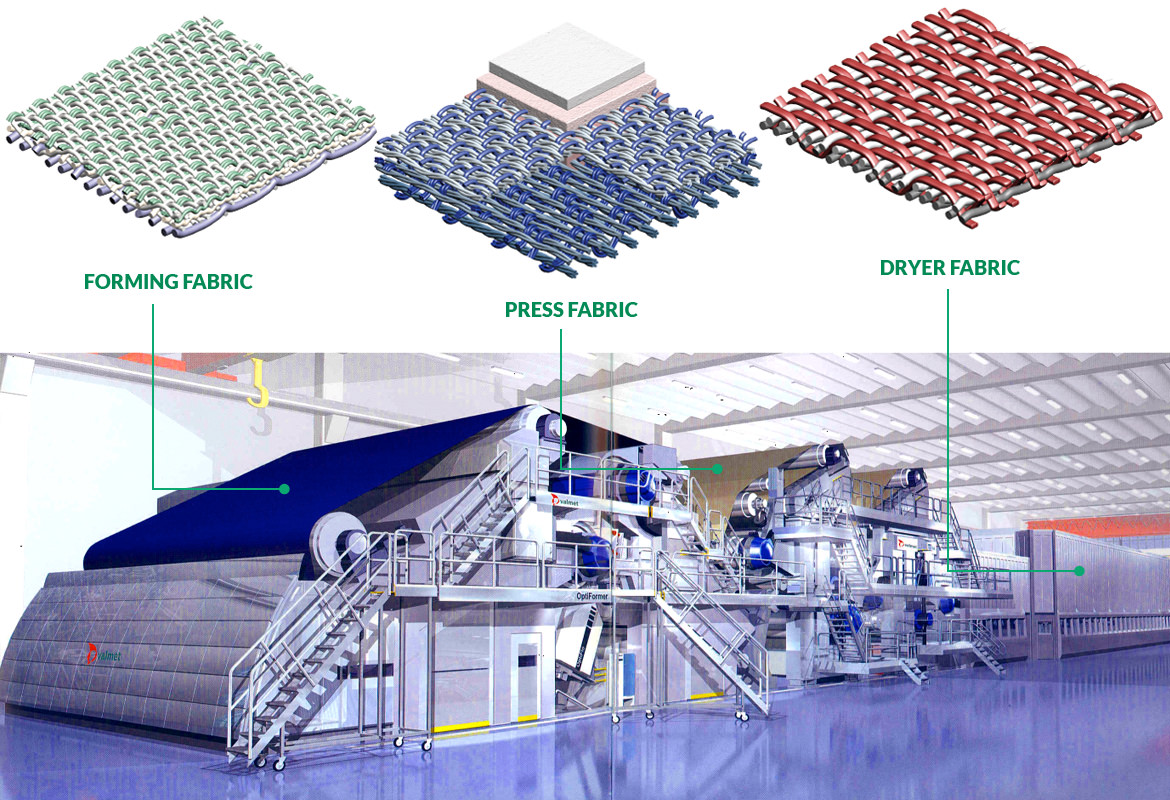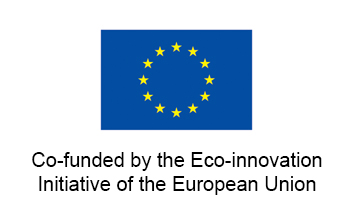Papermaking Process
In papermaking, a dilute suspension of cellulose fibers in water is drained through a fine fabric, to consolidate, so that a mat of randomly interwoven fibres is formed.
During the paper production, approximately 2-3% of cellulose fibers and mineral charges are dispersed in a water substrate.
The water is the vehicle to consolidate the cellulose fibers and orientate them to form the paper sheet, with the proper technical characteristics.
Papermaking substantially is based on the smart removal of water (which is highly recycled in the process) from the paper sheet.
Today, the paper production process is customary broken-down in three phases, and these apply to all paper production plants.
In this stage a "blade" of water with fibers is laid onto a big sleeve (a textile substrate, called forming fabric), running at high speed.
The paper fibers consolidate on the surface of the forming fabric, losing the water where the fibers are dispersed by means of mechanical parts (ceramic foils) and vacuum boxes (these are metal boxes with slots on surface which suck part of the water contained in the paper sheet trough the forming fabric).
At this point in the process, the paper sheet, already consolidated, leaves the forming section with moisture ranging from 80 to 84% in weight.
The average kg of water removed per kg of fibers in this stage is approx. 1,24 kg/kg.
In this stage the moisture contained in the paper is removed by pressing the sheet against another big sleeve (a textile substrate with fine synthetic fibers on surface, called press fabric).
The water is removed by capillarity, trough the effect of the press rolls action.
The paper leaves the press section with moisture ranging from 50 to 53% in weight.
The average kg of water removed per kg of fibers in this stage is approx. 2,25 kg/kg.
In this stage the water contained in the paper is removed by drying the sheet against metal cylinders heated by steam. Big textile sleeves (called dryer fabrics) press the sheet against the surface of the dryer cylinder, to reduce the insulating boundary layer of air trapped in between the sheet and the cylinder surface, promoting the heat exchange.
The paper leaves the dryer section with moisture ranging from 2 to 3% in weight.
The average kg of water removed per kg of fibers in this stage is approx. 1,25 kg/kg. The specific cost of water removal at this stage is approx. 10x the cost required in the press section, and 30x the cost in the forming section.
For this reason, the optimization of the forming and press section dewatering is extremely important to improve machine efficiency.

Layout of a paper machine & related Paper Machine Clothing (PMC)

